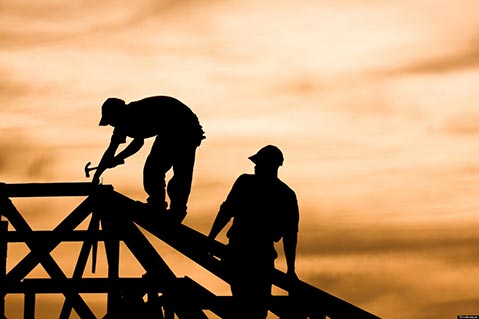Green Your Crib: Construction as Path to Middle Class

Recently I wrote about women in construction and the many high-paying career opportunities that are now available in this field. The positive aspects of construction employment that I listed — seeing tangible results, interesting, varied and challenging work, and good pay — apply to men, as well.
Some people worry about the irregular nature of construction employment. There is some truth to this: Construction jobs took a big hit during the recent recession, the biggest since the depression of the 1930s. The Bureau of Labor Statistics, however, projects the annual employment rate in construction to grow by 2.6 percent between 2012 and 2020, a creation of 1.6 million jobs over this eight-year period. This expansion is the most of any sector of the economy, except for the health-care sector, which is projected to grow slightly more. According to the Bureau’s statistics, 290,000 construction jobs were added in 2014 and a similar number will be added this year.
These days, fewer young people are choosing a career in construction as parents and school officials promote high-tech careers. Consequently, the construction workforce is getting progressively older. Many of the job openings will be to replace retiring tradespeople. There is already an acute shortage of competent, skilled, motivated workers.
There exists a myth that those who work in a blue-collar industry like construction don’t earn much money. Many, probably most, construction workers in this region earn between $50,000-$120,000 per year, an income often accompanied by a good benefits package, as well. This is frequently higher than what some of the high-tech fields pay, such as computer systems analysts. And the skill gap between these sectors is narrowing. Today, having computer skills, an analytical aptitude, and a problem-solving bent, together with the traditional manual-trade skills, helps one gain a good position in construction and advance up the career ladder rapidly.
It used to be that companies hired from project to project, but now the norm is for companies to hire for the long-term. Increasingly, the term “profession” is being associated with work in construction. And because of the tangible nature of the work, there still exists a strong element of pride in the craftsmanship that workers bring to projects.
A recent survey of 30,000 employees among 12 distinct industries reported that construction workers are the happiest. Good relationships with peers and colleagues turned out to be a big part of trade-worker satisfaction. Santa Barbara offers the added advantage of working outside year-round and most of the time in great weather.
Hammer the nail true, saw the line straight, watch the pieces come together, and enjoy good camaraderie, all the while getting exercise outdoors in the sunshine. What is there not to like?
With a shrinking middle class in America, school officials and parents need to reevaluate the advantages of working in construction and start getting the message out that this is a cool track to the middle class.



